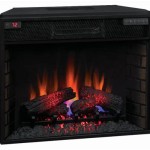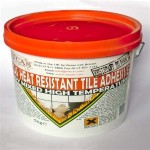Selecting the Right Tile for Your Fireplace Hearth
The fireplace hearth serves as a critical element in the design and functionality of a fireplace. Beyond its aesthetic contribution, the hearth provides a non-combustible surface that protects flooring and surrounding structures from sparks and embers. Choosing the right tile for a fireplace hearth requires careful consideration, focusing on material properties, safety standards, aesthetic compatibility, and installation requirements.
Tile selection for a fireplace hearth is not merely a decorative decision. The hearth is exposed to significant heat, potential impacts from logs or tools, and the accumulation of ash and soot. Consequently, the chosen tile must be durable, heat-resistant, and easily cleanable to ensure both safety and longevity. This article outlines the key considerations and material options available for selecting the appropriate tile for a fireplace hearth.
Key Considerations for Fireplace Hearth Tile Selection
Several factors must be evaluated before selecting a tile for a fireplace hearth. These include heat resistance, durability, maintenance requirements, aesthetic appeal, and compliance with building codes. Failure to adequately consider these aspects can lead to functional shortcomings and potential safety hazards.
Heat resistance is paramount. The tile must withstand the high temperatures generated by the fireplace without cracking, discoloring, or compromising its structural integrity. Different tile materials possess varying degrees of heat resistance, making material selection a crucial step. Durability is also critical, as the hearth is subject to impacts from logs, fireplace tools, and general foot traffic. A durable tile will resist chipping, scratching, and cracking, ensuring a longer lifespan.
Maintenance is another essential consideration. The hearth will accumulate ash, soot, and potentially spilled embers. The tile should be easy to clean and resistant to staining. Porous materials may require sealing to prevent absorption of stains, while non-porous materials are generally easier to maintain. The aesthetic appeal of the tile must also complement the overall design of the fireplace and the surrounding room. The tile should harmonize with the fireplace surround, mantel, and other architectural elements.
Finally, compliance with local building codes is essential. Many jurisdictions have specific regulations regarding the size and composition of fireplace hearths, including the use of non-combustible materials. Consulting with a local building inspector or contractor can ensure that the chosen tile meets all applicable requirements.
Popular Tile Materials for Fireplace Hearths
Several tile materials are commonly used for fireplace hearths, each offering unique advantages and disadvantages. These include ceramic tile, porcelain tile, natural stone tile, and brick.
Ceramic tile is a popular and cost-effective option for fireplace hearths. It is relatively durable, easy to clean, and available in a wide variety of colors, patterns, and sizes. Ceramic tile is manufactured by firing clay at high temperatures, resulting in a hard, durable surface. While ceramic tile is generally heat-resistant, it may not be as resistant to extreme temperature fluctuations as some other materials. It is important to select a ceramic tile with a high PEI (Porcelain Enamel Institute) rating, which indicates its resistance to abrasion and general wear. A higher PEI rating is recommended for high-traffic areas and surfaces exposed to potential impacts.
Porcelain tile is a denser and more durable alternative to ceramic tile. It is made from a finer clay and fired at higher temperatures, resulting in a tile that is less porous and more resistant to water absorption. This makes porcelain tile an excellent choice for fireplace hearths, as it is less likely to stain and easier to clean. Porcelain tile also offers superior heat resistance compared to ceramic tile. Like ceramic tile, porcelain tile is available in a wide range of styles and finishes, including options that mimic the look of natural stone. The density of porcelain tile also makes it more resistant to chipping and cracking.
Natural stone tile, such as slate, granite, and marble, offers a unique aesthetic appeal and inherent durability. These materials are naturally heat-resistant and can withstand the rigors of fireplace use. Slate is a particularly popular choice for fireplace hearths due to its rustic appearance and excellent heat resistance. Granite is another durable option, known for its strength and resistance to scratches and stains. Marble offers a more elegant and sophisticated look, but it is more porous than granite and slate and may require sealing to prevent staining. Natural stone tile can add significant value and visual interest to a fireplace, but it is generally more expensive than ceramic or porcelain tile. Furthermore, natural stone can be more challenging to install, requiring specialized tools and techniques.
Brick is a traditional and timeless choice for fireplace hearths. It offers excellent heat resistance and a classic, rustic aesthetic. Brick is also highly durable and can withstand significant impacts. It is a relatively porous material, however, and may require sealing to prevent staining. Brick is available in a variety of colors and textures, allowing for customization to suit different design preferences. Reclaimed brick can add character and historical charm to a fireplace, while new brick offers a more uniform and consistent appearance. The installation of brick requires specialized skills and techniques, particularly when creating intricate patterns or designs.
Installation Considerations for Fireplace Hearth Tile
Proper installation is crucial to the performance and longevity of a fireplace hearth. Incorrect installation can lead to tile cracking, grout failure, and even safety hazards. Several factors must be considered during the installation process, including substrate preparation, mortar selection, grout selection, and sealing (if applicable).
Substrate preparation is the first and arguably most important step. The substrate, which is the surface beneath the tile, must be clean, level, and structurally sound. Any imperfections in the substrate, such as cracks or unevenness, must be addressed before installing the tile. A common substrate material for fireplace hearths is concrete or a cement backer board. These materials provide a stable and non-combustible base for the tile. It is essential to ensure that the substrate is properly cured and free of any debris or contaminants before applying the mortar.
Mortar selection is another critical consideration. The mortar is the adhesive that bonds the tile to the substrate. It is essential to choose a mortar that is specifically designed for use with the chosen tile material and for high-temperature applications. Modified thin-set mortar is a common choice for tile installation, but it is important to select a formulation that is resistant to heat and moisture. Some mortars are specifically formulated for use with natural stone, while others are better suited for ceramic or porcelain tile. The manufacturer's instructions should be carefully followed when mixing and applying the mortar.
Grout selection is also important for both aesthetic and functional reasons. The grout fills the spaces between the tiles and provides a seal that prevents water and debris from penetrating beneath the surface. The grout should be resistant to staining and easy to clean. Epoxy grout is a durable and stain-resistant option, but it can be more difficult to apply than cement grout. Cement grout is more porous and may require sealing to prevent staining. The color of the grout should complement the color of the tile and the overall design of the fireplace. It is important to choose a grout that is appropriate for the width of the grout joints. Wider grout joints may require a sanded grout, while narrower joints can be filled with an unsanded grout.
Sealing is required for some tile materials, particularly natural stone and porous ceramic tiles. Sealing helps to protect the tile from staining and water damage. The sealant penetrates the pores of the tile and creates a barrier that prevents liquids from being absorbed. It is important to choose a sealant that is specifically designed for the chosen tile material. Some sealants are designed for use with natural stone, while others are better suited for ceramic or porcelain tile. The sealant should be applied according to the manufacturer's instructions. Regular reapplication of the sealant may be necessary to maintain its protective properties.
In summary, selecting the right tile for a fireplace hearth requires careful consideration of several factors, including heat resistance, durability, maintenance requirements, aesthetic appeal, and installation requirements. By carefully evaluating these aspects and choosing the appropriate tile material and installation techniques, homeowners can ensure that their fireplace hearth is both safe and visually appealing. Consultation with a qualified contractor or building inspector can provide valuable guidance throughout the selection and installation process.

Fireplace Tiles Classique Floors Tile Portland Or

Operation Hearth Re Tile Grouted Goodness Fireplace Tiles Home Remodel

How To Tile A Fireplace Surround And Hearth Build Basic
/102661017-6a23c040b71843379188b96b21ac1a08.jpg?strip=all)
How To Tile A Fireplace

How To Tile Over A Brick Hearth Shine Your Light

Fireplaces Renditions Tiles

How To Tile A Fireplace My Uncommon Slice Of Suburbia

Handmade Fireplace Tiles Bert May

Hearth Olde English Tiles
Fireplace Hearth Reveal And Another Project Started She Knits Too
Related Posts








